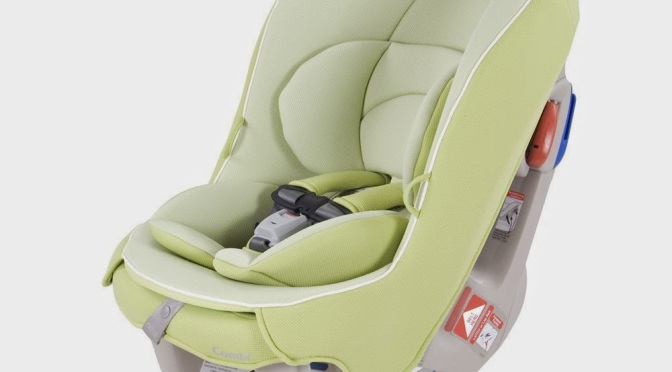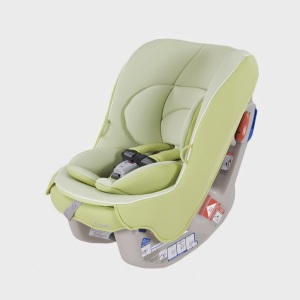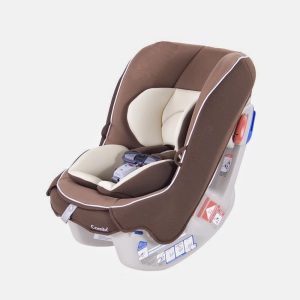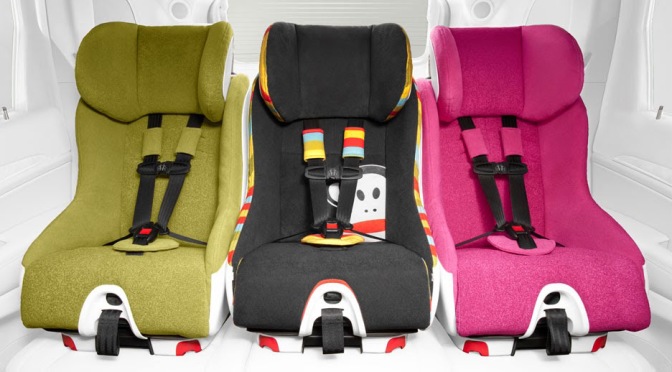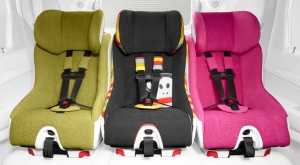When it comes to car safety, you can focus on driving safely and you can focus on choosing a safe car. However, if you have children, you also need to focus on choosing a safe car seat. This is one of a series of reviews I’ll write on what I consider to be the best car seats currently available in the United States. This review focuses on the UPPAbaby MESA. My wife reviewed two strollers compatible with the MESA, the Cruz and Vista, and it was only natural that I’d review the infant seat that fit them like a glove.
2018 update: There haven’t been any significant changes (besides fabric stylings) to the UPPAbaby MESA since 2015; it remains a solid infant seat and an excellent choice for a baby’s first car seat.
UPPAbaby MESA – What’s the big deal?
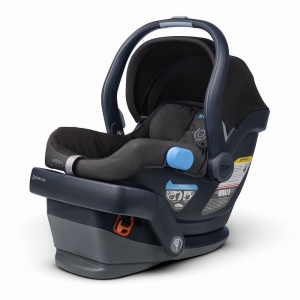 The UPPAbaby MESA isn’t the kind of seat I’d typically review, given my preference for convertibles and combination seats, but functionality is what’s important, and in terms of functionality, this is one of the most impressive seats on the market. It’s an infant car seat, which means it can be used in one configuration: as a rear-facing infant seat. It does not forward face; for that, you’ll need a convertible. It’s the first infant seat from the popular stroller brand UPPAbaby, and aims to improve child safety by increasing the odds parents have of correctly installing and using car seats from day one. Is it worth it? Read on to find out!
The UPPAbaby MESA isn’t the kind of seat I’d typically review, given my preference for convertibles and combination seats, but functionality is what’s important, and in terms of functionality, this is one of the most impressive seats on the market. It’s an infant car seat, which means it can be used in one configuration: as a rear-facing infant seat. It does not forward face; for that, you’ll need a convertible. It’s the first infant seat from the popular stroller brand UPPAbaby, and aims to improve child safety by increasing the odds parents have of correctly installing and using car seats from day one. Is it worth it? Read on to find out!
UPPAbaby Limits for Weight and Height
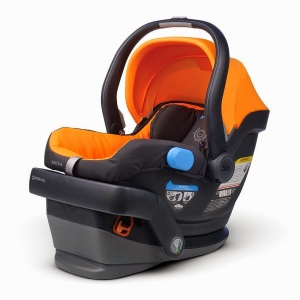 Rear-facing: 4-35 pounds. Your child’s head should not reach past 1″ below the top of the main shell. There is also a 32″ height limit for the child, which is 2″ more than the 30″ limit in the Chicco KeyFit 30. The seated height is around 17.5″ inside the seat.
Rear-facing: 4-35 pounds. Your child’s head should not reach past 1″ below the top of the main shell. There is also a 32″ height limit for the child, which is 2″ more than the 30″ limit in the Chicco KeyFit 30. The seated height is around 17.5″ inside the seat.
Of course, as a parent interested in best practices, you’re not going to stop at 35 lbs, since research into car safety indicates children should remain rear-facing for as long as possible (the average is 4 years in Sweden, which posts the lowest child fatality rate on Earth), and after rear-facing, the child should remain forward-facing as long as possible.
Buy the UPPAbaby MESA on Sale at Amazon here.
Dimensions of the UPPAbaby MESA
The seat is 17″ wide at its widest point and 14″ at the base, which is much narrower than the Chicco KeyFit 30. The seat weighs 11.1 pounds, which makes it one of the lightest seats I’ve reviewed so far, although it’s heavier than the Chicco KeyFit 30. Of course, being an infant seat, it should be a rather light seat to begin with. It also has a 7-year expiration date.
Using the UPPAbaby MESA
UPPAbaby claims the MESA only takes 10 seconds to install via LATCH, and according to my stopwatch, that’s pretty accurate. I was surprised myself until I took a look at the seat, and discovered that this was just one of the many things to love about the MESA. What makes the MESA so awesome? It’s a seat that was clearly thought out well ahead of time, and that led to a good design and solid construction.
The MESA comes with a detachable base that has a low profile and, quite frankly, looks pretty slick. I like how it has spaces for the LATCH connectors to hide when not in use and how they’re activated by a button on the base. Good thinking, UPPAbaby. The base also includes recline angle indicators and has 4 positions for adjusting the recline. There is a red-green window indicator on the base that lets you know when you’ve got a good installation. You can purchase extra bases separately for installation in additional vehicles.
The seat can be detached from its base and attached to UPPAbaby strollers such as the CRUZ or VISTA, which makes it easy to transport your children while on the go. There is a handle button that allows disconnection of the seat from a stroller with a single hand, which is an unexpected but highly appreciated luxury.
Washing Instructions, LATCH, and Seat Belt Use
The MESA covers are machine washable (use the cold water cycle on delicate with a mild detergent, and air dry them). The manual is available in English and Spanish and makes sense in both languages. You can achieve a good install with either the seat belt or with lower LATCH anchors. Don’t use both, of course. The seat may be installed with or without the base. I like the base because it makes it a snap (literally) to install and remove the seat, which is crucial for getting a newborn or young infant out of a vehicle or into one without waking him or her. It’s an incredibly good fit, too, which I like.
Something else I like about the MESA is that it is very preemie friendly. There are a lot of seats that require a lot of hoops such as blanket rolling to make work with premature infants, and any mother who has purchased, bought, and returned several car seats to and from the NICU in effort to find a seat that makes a good fit knows how thankless of a task that is. However, the MESA fits preemies easily (as long as they weigh at least 4 pounds), which is a blessing. It is recommended to use the infant insert if using the seat with babies between 4 and 8 pounds.
Buy the UPPAbaby MESA on Sale at Amazon here.
Why Buy the UPPAbaby MESA?
This is the meat and potatoes of this car seat. The UPPAbaby MESA is not designed to help you rear-face a child until the cows come home. What it does well is provide parents with a convenient and nearly fool-proof method of getting their child safely from the hospital and around for the first few months of life. After that, I’d recommend replacing it with a convertible seat with the highest RF limits you can find. In other words, look for these seats. Remember, every pound is precious, as the longer you rear-face, the safer your child is. In the US, parents tend to turn their children around into the line of fire at 1. In Sweden, this typically isn’t done until 4. Children in Sweden are far less likely to die in car crashes than children in the US. It makes that much of a difference.
If extended rear facing is what’s most important, then you might wonder why I’d suggest a seat that doesn’t come anywhere close to the best ERF limits. That’s because infant seats aren’t designed to RF forever. They’re for convenience! A class A convertible like a Foonf weighs more than 30 pounds; add the 7 pounds of a newborn and there’s no way you’re going to take that seat and child anywhere if it’s all you have as a child seat.
The MESA is compatible with a range of strollers and joggers
In contrast, with a seat like the MESA, you buy it pre-packaged with a stroller or buy it separately and then package with a stroller, such as with the UPPAbaby Vista stroller or the UPPAbaby CRUZ stroller. You can even buy Baby Jogger MESA adapters to attach the MESA to a range of Baby Jogger strollers, including the City Mini GT.
Use the seat and stroller to transport your child when walking, and move the seat with your newborn about without waking up your child. Later, as your child gains in weight, you’ll naturally stop using the infant seat and start using the stroller or a good baby carrier to transport him or her, and when s/he’s in the car, you’ll use a high quality convertible car seat, and then later a combination seat. That’s the easiest way to navigate the practicalities of weight, children, car seats, and transportation. Start with the infant seat and stroller, or infant seat and carrier, and transition to the stroller or carrier and convertible seat.
The MESA has a larger weight limit and a taller shell that enable you to rear-face longer in an infant seat than you would in a seat like the Chicco Keyfit 30. The 4-lb minimum is great for preemies, it is incredibly easy to install, comes with a machine washable cover, a 7-year expiration date, and even a 2-year warranty as long as you have proof of purchase. All of these factors combine to make this, in my opinion, the single best infant seat currently available on the market.
I recommend the UPPAbaby MESA wholeheartedly. You can buy the UPPAbaby MESA in a range of colors here. The UPPAbaby MESA Vista stroller is here and the UPPAbaby MESA CRUZ stroller is here. Here is where you can pick up an extra base. Finally, here’s an example of a great baby carrier, the Pognae.
Unfortunately, the MESA is not yet available in Canada, but the closest Canadian equivalent I’d recommend is the KeyFit 30, available here.
 If you find my information on best practices in car and car seat safety helpful, you can do your shopping through this Amazon link. Canadians can shop here for Canadian purchases. Have a question or want to discuss best practices? Join us in the forums!
If you find my information on best practices in car and car seat safety helpful, you can do your shopping through this Amazon link. Canadians can shop here for Canadian purchases. Have a question or want to discuss best practices? Join us in the forums!


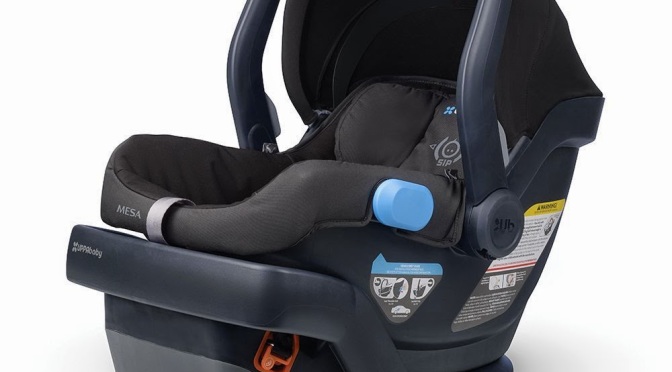


 If you find my information on best practices in car and car seat safety helpful, you can
If you find my information on best practices in car and car seat safety helpful, you can 